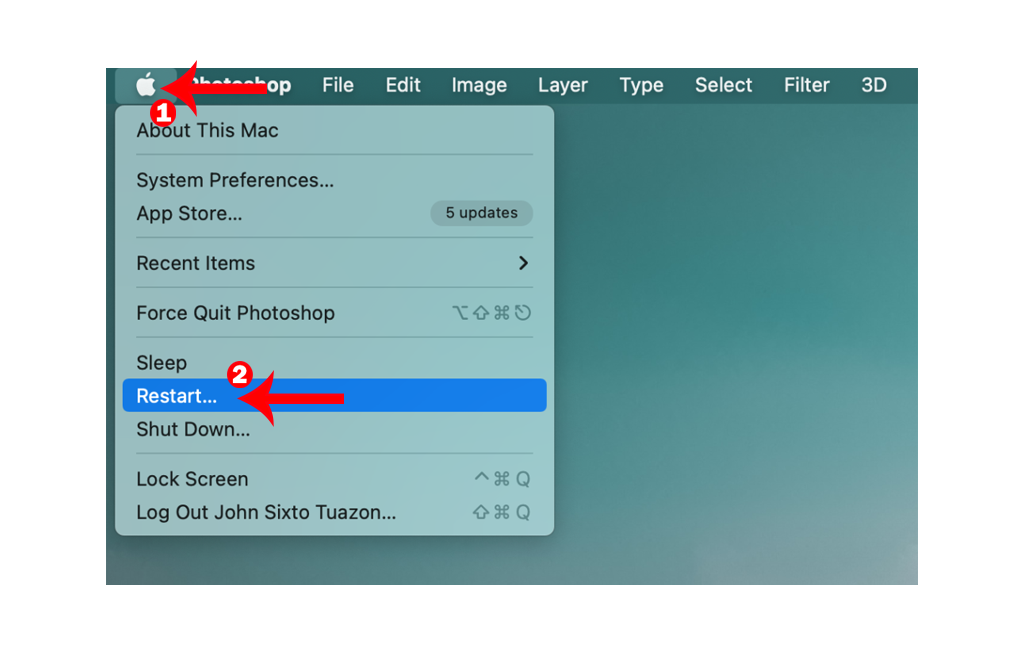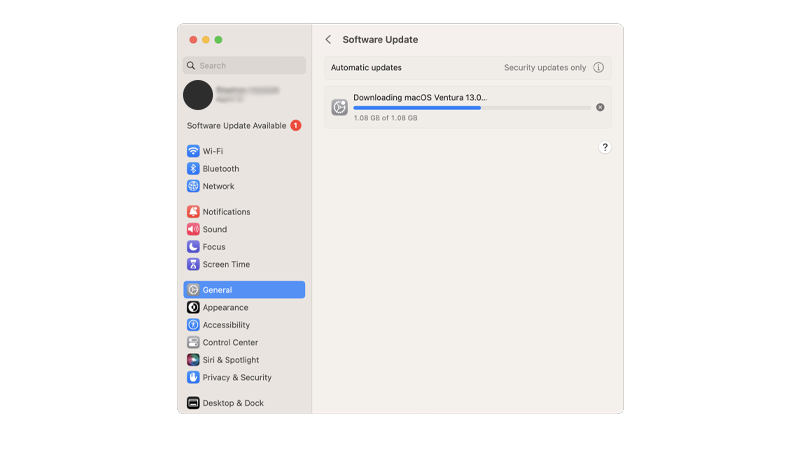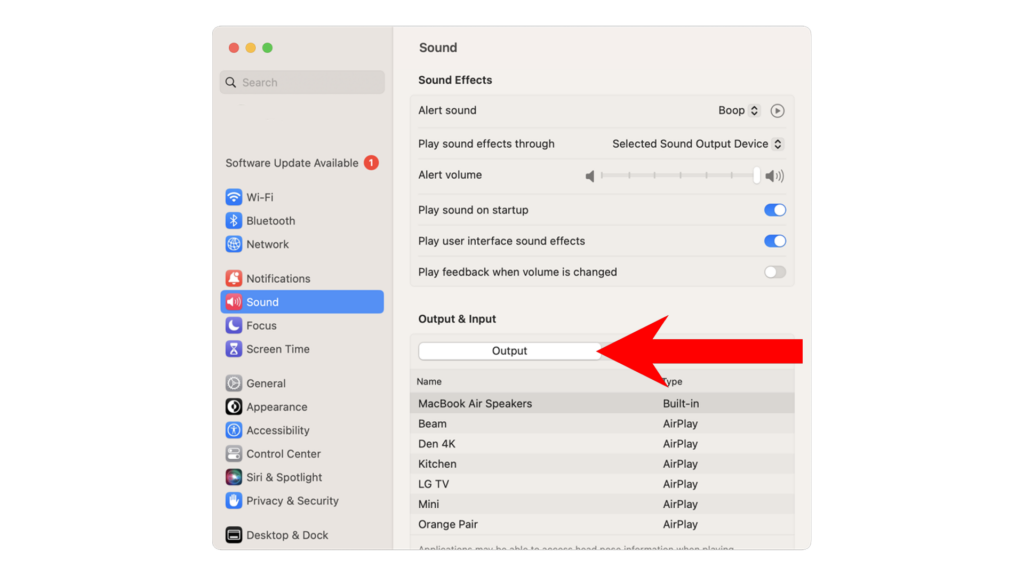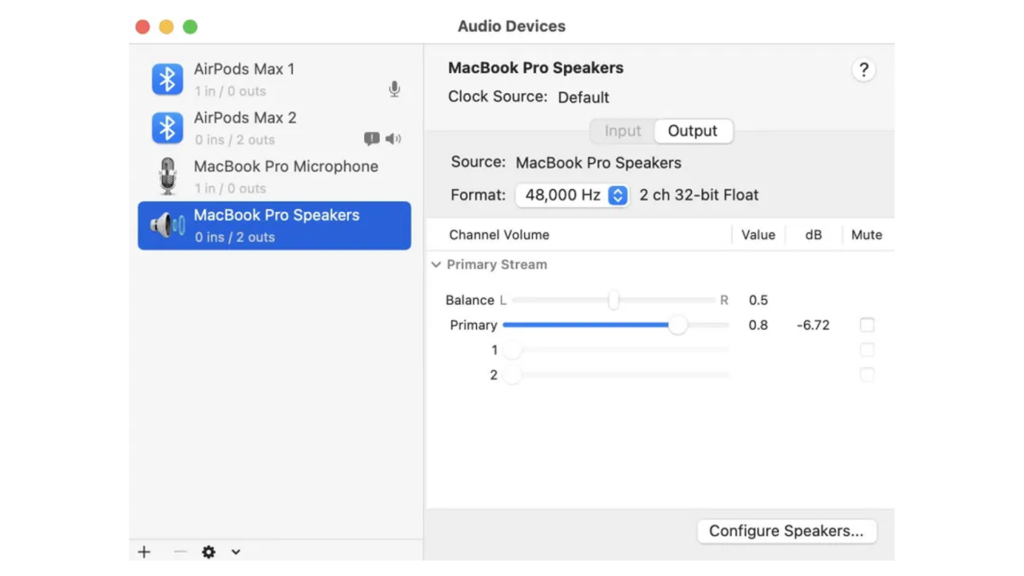If the sound controls are not working on your Mac, it could be due to conflicts with your audio devices, temporary glitches, system bugs, or incorrect sound settings.
In this guide, we will explore the most effective solutions to restore the function of your sound controls.
Let’s start!
TL;DR Version
Try these fixes if your sound controls are not working on your Mac.
1. Check Your Audio Devices
Certain external audio devices have their own audio controls, which can potentially be in conflict with your Mac’s sound settings.
If you find yourself unable to adjust the volume using your Mac, consider the following steps:
- Verify whether your external audio device includes built-in audio controls.
- Make sure that the 3.5 mm audio port is not occupied.
- Unpair any Bluetooth audio devices connected to your Mac.
2. Restart Your Mac
Your Mac may experience temporary glitches impacting audio performance.
Restarting your Mac can refresh its system, addressing problems that have come up during use.
Follow these steps to restart:
- Select the Apple logo at the top left of your screen.
- Choose Restart from the drop-down menu.
- Click Restart again when prompted to confirm.

3. Update Your Mac to the Latest Version
The macOS version that you’re using could contain a bug or error affecting audio controls.
Apple may have already identified this problem and released an update to fix it.
To update your Mac:
- Click on the Apple Menu in the top-left corner of your screen.
- Choose System Settings.
- Navigate to General.
- Select Software Update to check for available updates and follow the on-screen instructions to install it.

Important Notes
- Your Mac may restart several times during the update installation.
- If the update progress bar seems frozen, remain patient. Software updates may take some time to finish.
4. Make Sure Output Source is Set to ‘Internal Speakers’
If you’re attempting to use your Mac’s internal speakers and encounter no sound, you may need to verify your sound settings:
- Open the Apple Menu at the top left corner of your screen.
- Navigate to System Settings.
- Select Sound from the menu on the right.
- Scroll down to Output & Input.
- Make sure that the selected Output Source is Internal Speakers.

5. Restart the ‘Core Audio’ Process Using Activity Monitor
Restarting ‘coreaudiod’ via the Activity Monitor can help fix issues with your Mac’s audio controls.
This action forces a restart of the audio-related process that might have malfunctioned.
Here’s what you need to do:
- Press Command + Space to launch Spotlight Search.
- Enter Activity Monitor and open it.
- Search for coreaudiod and click to select it.
- Hit the X button at the top of the window to terminate the process.

6. Check the ‘Audio MIDI’ Setup
If your internal speakers or audio device remains silent, you might find a solution by examining your audio MIDI settings:
- Activate Spotlight with Command + Space.
- Type Audio MIDI Setup and open it.
- In the left sidebar, make sure that the correct audio device is selected.
- Adjust the volume slider to your desired level.

7. Boot Mac In Safe Mode
Booting in safe mode starts your Mac with only essential applications. This can help you identify if third-party applications are causing issues with your sound controls.
To boot your Intel-based Mac in safe mode:
- Click the Apple Menu at the top-left corner.
- Choose Shutdown and wait for your Mac to power off.
- Press the Power button, then hold the Shift key immediately.
- Release the Shift key once the login window appears.
For Apple silicon Macs:
- Access the Apple Menu at the top-left corner.
- Opt for Shutdown and allow your Mac to completely power down.
- Press and hold the Power button until the Loading Startup Options screen is displayed.
- Select your boot volume (typically Macintosh HD), press and hold Shift, and then click Continue in Safe Mode.
Note:
If your Mac’s sound controls function correctly in safe mode, uninstall any applications that provide sound control or equalization features.
FAQs
Why are the keyboard sound buttons not working on my Mac?
If your Mac’s volume keys are not responding, it’s likely because your keyboard is configured to treat F1, F2, etc. as standard function keys. To adjust the volume, simultaneously press the FN key with F10, F11, or F12 to adjust the volume.
To avoid using the FN key for volume control, modify your keyboard settings.
- Open the Apple Menu at the top-left corner of your screen.
- Go to System Settings.
- Scroll to and select the Keyboard section.
- Click on Keyboard Shortcuts, under Keyboard Navigation.
- Choose Function Keys.
- Enable Use F1, F2, etc. keys as standard function keys.
Why can’t I control the sound on my Mac?
If you’re unable to control your Mac’s sound, it may be because you’re connected to an external audio device that has its own controls. You may need to check the instruction manual or contact the manufacturer for further assistance. To use your Mac’s internal speakers, check if there are any audio devices connected via Bluetooth or the 3.5mm jack and disconnect them.
How do I enable volume control on my Mac?
To adjust your Mac’s volume, use the Sound Control icon in the menu bar or Control Center. If the Sound Control icon isn’t visible in the menu bar, you may need to modify your settings.
- Go to Apple Menu and open System Settings.
- Select Control Center from the menu on the right.
- Click the dropdown menu next to Sound and choose All the Time.
What is the keyboard shortcut for volume control on a Mac?
On your Mac, F10, F11, and F12 can be used to mute, lower, and raise the volume, respectively. For finer control, press Option + Shift + Volume Up or Option + Shift Volume Down to adjust the volume in smaller increments.





